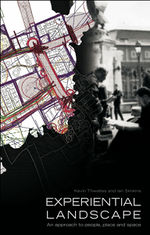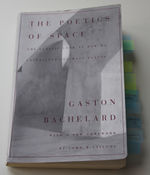atom11:Intimacy
| Line 18: | Line 18: | ||
| − | <div style="float:left; margin-left:10px; width: | + | <div style="float:left; margin-left:10px; width: 800px; overflow:hidden; " > |
| + | <div style="float:left; margin-left:10px; width: 200px; overflow:hidden; " > | ||
“We are hypnotized by solitude, hypnotized by the gaze of the solitary house; and the tie that binds us to it is so strong that we begin to dream of nothing but a solitary house in the night. With the example of the hut and the light that keeps vigil on the far horizon, we have shown the concentration of intimacy in the refuge” | “We are hypnotized by solitude, hypnotized by the gaze of the solitary house; and the tie that binds us to it is so strong that we begin to dream of nothing but a solitary house in the night. With the example of the hut and the light that keeps vigil on the far horizon, we have shown the concentration of intimacy in the refuge” | ||
(Bachelard, The Poetics of Space, pp. 37) | (Bachelard, The Poetics of Space, pp. 37) | ||
| + | </div> | ||
</div> | </div> | ||
Revision as of 13:45, 12 October 2011
Contents |
Intimacy
in·ti·ma·cy
- the state of being intimate: familiarity
- something of a personal or private nature
synonyms: belonging, closeness, inseparability, familiarity, nearness
Cultural Intimacy
Cultural intimacy as a research topic has proven to be too large of a topic considering our client is not yet specified. In order for this intervention to be available to everyone, it is a more prudent use of time to focus more on the phenomenological and psychological aspects of intimacy and how we can relate these concepts to life in the public sphere.
Psychological Intimacy
Defined as the way humans experience intimacy in space based on the subconscious or innate human tendencies.
Each photo below is a link to the research gathered in that resource.
Rules
- People should have a space of their own to escape to, even if it is only temporarily theirs.
- Communal areas should be located between distribution of groups/functions and should be tangent to circulation space.
- There must be a clearly defined entry condition, and this condition must treat entering and exiting as separate and unsymmetrical acts.
- The hierarchy of space must be defined so that the deeper one explores the intervention, the more private the space becomes.
- The intervention should provide by protection to the users' backs as well as frame a larger view to which they can orient themselves.
Rule:
- allow users to become attached to the intervention. Attachment is a precursor to intimacy.
There is an idea of temporary territorial claim that describes attachment to a place or object. The story that follows is a good example of how humans engage their environments and how their environments become influential in their behavior.
The Poetics of Space by 'Gaston Bachelard'
Rules:
- To emit a feeling of stability, the intervention must be both vertically and centrally oriented.
- The intervention must stimulate the imagination before, during and after the user experiences it.
- Users must be able to leave their mark on the place, the magnitude of this mark is determined by the user.
- "to go in and come out are never symmetrical images."
Passillion (link is in French)
Based on the theme of passion, this poetic project attempts to address the meeting, marriage and separation of a French art teacher (the client) and her late husband. The follie, as the function describes, is located on the client’s property in Giverny, France. Situated in the woods but overlooking an expansive hay field, the project responds to certain conditions of intimacy that are embedded in our subconscious.
This one small project actually embodies many examples from Alexander’s Pattern Language, including: [vertical] intimacy gradient, entrance room, a room of one’s own, and hierarchy of open space (referring to the siting).
Phenomenological Intimacy
Christian Norberg Schulz "Genius Loci Towards a Phenomenology Architecture"
The Phenomenon of Place.
How does the environment influence human beings?
Man can identify himself with an environment, when he experiences the environment as meaningful.
"Now I am traversed by bridle paths, under the seal of sun and shade...I live in great density...Shelter lures me. I slump down into the thick foliage...In the forest, I am my entire self. Everything is possible in my heart just as it is in the hiding places in ravines. Thickly wooded distance separates me from moral codes and cities." (Bachelard quoting Menard in The Poetics of Space, 187)







